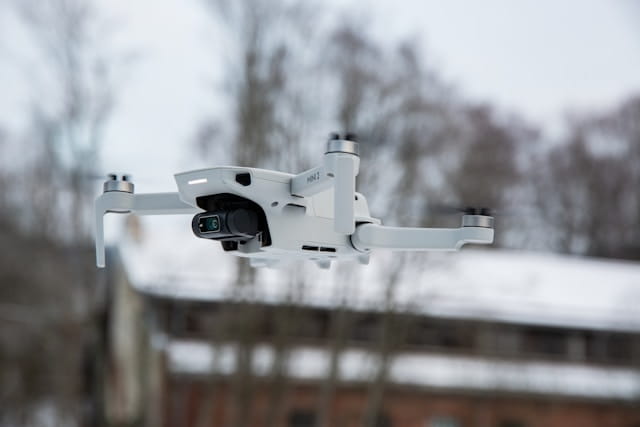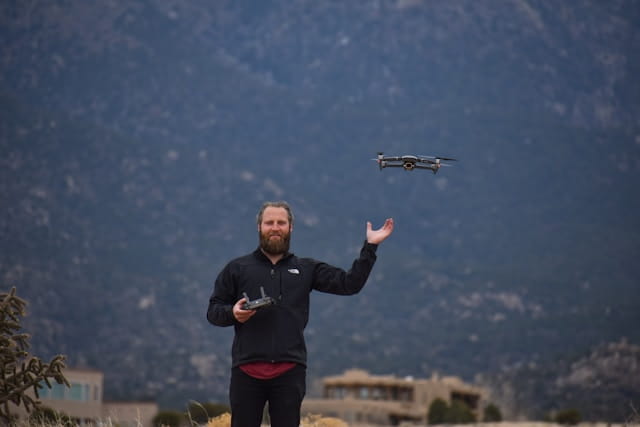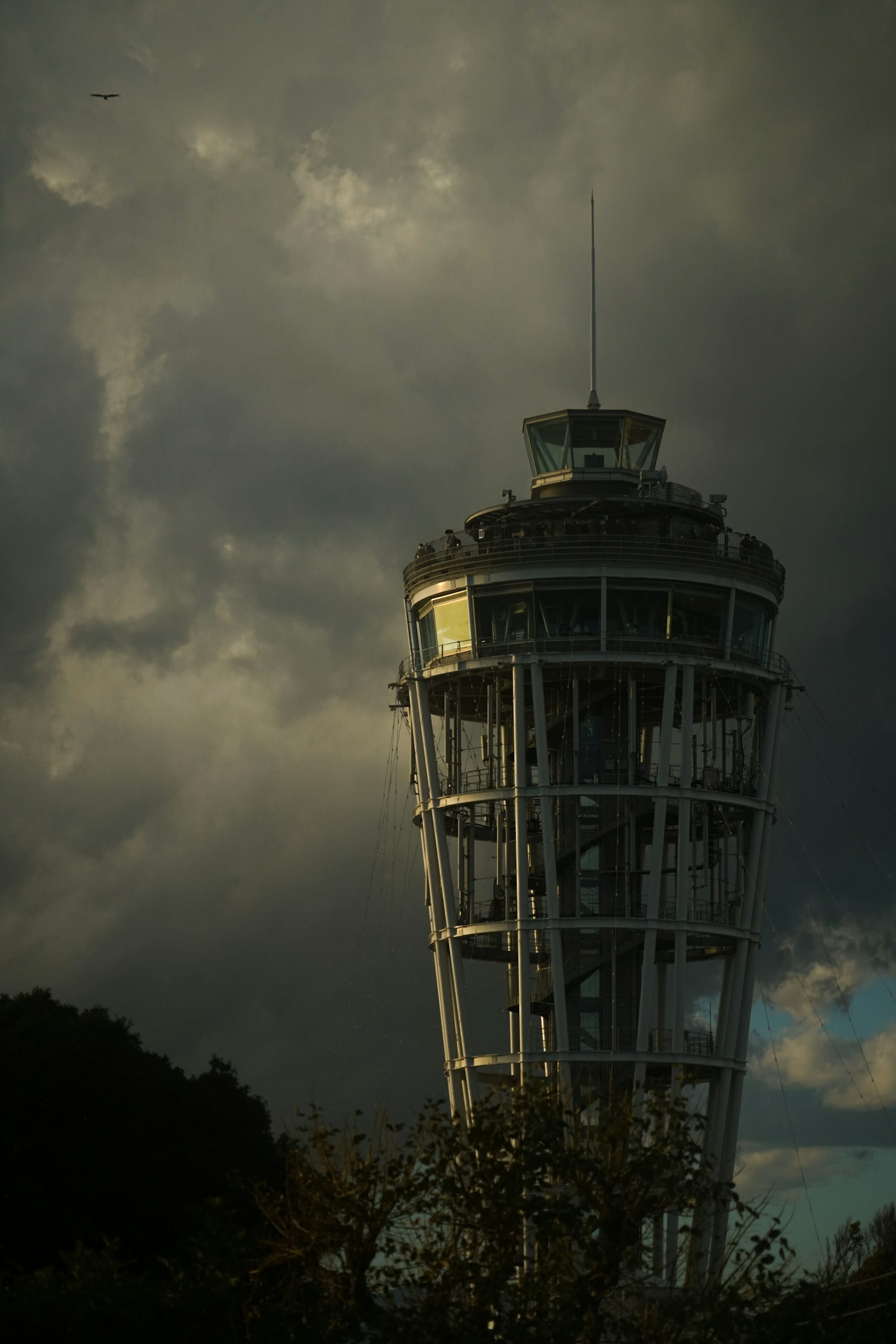Understanding the different types of airspace, including classes A through G and special use zones, is essential for safe, compliant drone and aircraft operations across controlled and uncontrolled regions.
Flying a drone isn't just about pushing the throttle and watching your aircraft soar into the blue. The sky above us is carved into invisible sections, each with its own rules, restrictions, and purposes. For commercial drone operators, understanding these airspace classifications can mean the difference between a successful mission and a regulatory nightmare.
Think of airspace like a layered cake – except this cake extends from the ground up to the stratosphere, and each layer has different ingredients (rules) that determine who can fly where and when. Miss a layer, and you might find yourself in hot water with aviation authorities.
Table of contents
- What is airspace classification
- Class A airspace
- Class B airspace
- Class C airspace
- Class D airspace
- Class E airspace
- Class G airspace
- Special use airspace categories
- Temporary flight restrictions
- International airspace considerations
- Technology tools for airspace navigation
- Common violations and how to avoid them
What is airspace classification
Airspace classification serves as the backbone of aviation safety worldwide. The system divides the sky into distinct zones based on air traffic density, aircraft types, and operational requirements. Each classification carries specific entry requirements, communication protocols, and flight rules.
The International Civil Aviation Organization (ICAO) established these standards, but individual countries adapt them to their specific needs. In the United States, the Federal Aviation Administration (FAA) manages six primary airspace classes: A, B, C, D, E, and G as part of comprehensive regulatory compliance frameworks.
But here's where it gets interesting – these classifications aren't just arbitrary lines drawn on aviation charts. They represent decades of aviation evolution, from the barnstorming days when pilots flew by sight alone to our current era of precision navigation and air traffic control systems.
Each airspace type reflects different operational environments. High-density areas around major airports get stricter oversight, while remote rural regions maintain more relaxed requirements. The system balances safety with operational flexibility, allowing different types of aircraft to coexist in the same general airspace.
Class A airspace
Class A airspace represents the most controlled and restrictive airspace classification. This zone extends from 18,000 feet mean sea level (MSL) up to 60,000 feet MSL throughout the continental United States.
All aircraft operating in Class A airspace must fly under Instrument Flight Rules (IFR) and maintain constant communication with air traffic control. Pilots need an instrument rating and specialized aviation training, and their aircraft must be equipped with specific navigation and communication equipment.
For drone operators, Class A airspace is essentially off-limits. Standard Part 107 operations cannot reach these altitudes, and even special waivers rarely extend into this zone. The airspace hosts commercial airliners, military aircraft, and high-performance general aviation aircraft operating at jet speeds.
The controlled environment of Class A eliminates the complexity of mixing IFR and Visual Flight Rules (VFR) traffic. Every aircraft follows assigned altitudes, routes, and speeds dictated by air traffic controllers. This separation creates a predictable, safe environment for high-speed, high-altitude operations.
Weather minimums in Class A require aircraft to operate entirely on instruments, as visual references become unreliable at these altitudes. The system relies on radar separation and precise navigation to maintain safety margins between aircraft.
Class B airspace
Class B airspace surrounds the busiest airports in the United States, creating a protective bubble around major aviation hubs. Picture an upside-down wedding cake with multiple layers, each extending further from the airport as altitude increases.
The airspace typically extends from the surface to 10,000 feet MSL, with the exact dimensions tailored to each airport's specific traffic patterns and approach procedures. Major airports like Los Angeles International (LAX), Chicago O'Hare (ORD), and John F. Kennedy (JFK) anchor these zones.
Entry into Class B airspace requires explicit clearance from air traffic control before penetration. Controllers must specifically state "cleared to enter Class B airspace" – a generic instruction to "contact tower" doesn't suffice. This strict protocol prevents unauthorized aircraft from entering the most congested airspace.
Drone operations in Class B airspace require careful coordination through the FAA's authorization processes. The Low Altitude Authorization and Notification Capability (LAANC) system provides some automated approvals, but many Class B operations require manual review and coordination with air traffic control facilities.
| Airspace Feature | Class B Requirements |
|---|---|
| Pilot certification | Private pilot certificate minimum |
| Equipment requirements | Transponder with altitude reporting |
| Communication | Two-way radio communication |
| Entry clearance | Explicit ATC clearance required |
| Speed limits | 250 knots below 10,000 feet |
The complexity of Class B airspace extends beyond just getting clearance. Aircraft must follow specific arrival and departure routes, maintain assigned altitudes, and comply with speed restrictions. The system handles everything from small training aircraft to massive cargo planes, creating a challenging environment for air traffic controllers.
Class C airspace
Class C airspace provides a middle ground between the intensive control of Class B and the more relaxed Class D environment. These areas surround airports with moderate traffic levels, typically those with control towers and radar approach control services.
The standard Class C configuration resembles a two-layer cake. The inner circle extends from the surface to 4,000 feet above the airport elevation with a 5-nautical-mile radius. The outer shelf runs from 1,200 feet to 4,000 feet above airport elevation with a 10-nautical-mile radius.
Aircraft entering Class C airspace must establish two-way radio communication with the appropriate air traffic control facility before entry. Unlike Class B, you don't need explicit clearance – just acknowledgment of your call sign establishes the communication requirement.
The radar services in Class C airspace provide traffic advisories and conflict resolution instructions. Controllers actively monitor aircraft movements and issue instructions to maintain separation. This service level creates a safer environment than uncontrolled airspace while maintaining operational flexibility.
Drone operators find Class C airspace more accessible than Class B, though authorization requirements still apply. The LAANC system handles many routine requests, but operators must respect the established procedures and altitude limitations.
Speed restrictions in Class C airspace mirror those in other controlled environments – 200 knots within the airspace and 250 knots above 10,000 feet. These limitations help controllers manage traffic flow and maintain safe separation standards.
Class D airspace
Class D airspace typically surrounds airports with operating control towers but without approach control services. These areas represent many community airports, regional facilities, and some military installations across the country.
The airspace normally extends from the surface to 2,500 feet above the airport elevation within a 4-nautical-mile radius. However, these dimensions can vary based on local traffic patterns, terrain, and operational requirements. Some Class D areas have irregular shapes that follow instrument approach procedures or avoid conflicting with nearby controlled airspace.
Communication requirements for Class D are straightforward – establish two-way radio communication with the control tower before entering. The controller must acknowledge your aircraft call sign, which establishes the communication requirement. Simple acknowledgment like "aircraft calling, standby" meets this requirement.
Operating hours affect Class D airspace classification. When the control tower closes, the airspace typically reverts to Class E or Class G, depending on the specific airport configuration. This change impacts entry requirements and available services.
Weather minimums for Class D operations require 3-statute-mile visibility and cloud clearances of 500 feet below, 1,000 feet above, and 2,000 feet horizontally from clouds. These requirements ensure pilots maintain adequate visual references for safe operations.
Drone operations in Class D airspace benefit from relatively straightforward authorization processes. Many routine operations receive automated approval through LAANC, though coordination with the control tower remains important for complex or non-standard requests.
The traffic mix in Class D airspace includes training flights, business aircraft, recreational flying, and some commercial operations. This diversity creates an environment where pilots must maintain heightened awareness of different aircraft performance characteristics and pilot experience levels.
Class E airspace
Class E (Echo) airspace fills the gaps left by other airspace classifications, creating a controlled environment without the intensive oversight of tower-controlled areas. This airspace type covers vast portions of the country and serves various operational needs.
Class E airspace begins at different altitudes depending on location and local requirements. In some areas, it starts at the surface around airports without control towers. In other regions, it begins at 700 feet or 1,200 feet above ground level. Above 14,500 feet MSL, Class E generally extends to the base of Class A airspace at 18,000 feet.
The Federal Airways system operates within Class E airspace, providing defined routes for instrument flight operations. These airways connect navigation aids and create a highway system in the sky for IFR traffic. Victor Airways serve aircraft below 18,000 feet, while Jet Routes accommodate high-altitude operations.
Communication requirements for Class E airspace are minimal for VFR operations – no specific radio contact is required for entry. However, IFR aircraft must maintain communication with appropriate air traffic control facilities and follow clearances.
Weather minimums in Class E below 10,000 feet MSL require 3-statute-mile visibility with cloud clearances of 500 feet below, 1,000 feet above, and 2,000 feet horizontally. Above 10,000 feet, visibility increases to 5 statute miles with cloud clearances of 1,000 feet below, 1,000 feet above, and 1 statute mile horizontally.
For drone operators, Class E airspace offers relatively straightforward operations in many areas. The LAANC system provides automated approvals for many Class E operations, particularly those below 400 feet AGL in areas without specific restrictions.
The diverse nature of Class E airspace means operators encounter varying traffic densities and operational complexity. Rural areas might see minimal air traffic, while Class E airspace near major airports can host significant IFR traffic flows.
Class G airspace
Class G airspace represents the last frontier of uncontrolled airspace in the United States. This classification covers areas where air traffic control services are not provided, leaving pilots responsible for their own traffic separation and navigation.
Most Class G airspace extends from the surface up to 700 or 1,200 feet AGL, though some areas reach up to 14,500 feet MSL in remote mountainous regions. The specific altitudes depend on local terrain, nearby airports, and instrument approach procedures.
Weather minimums for Class G operations below 1,200 feet AGL during daytime require only 1-statute-mile visibility with clear of clouds requirements. This relaxed standard reflects the lower altitude operations typical in this airspace. Above 1,200 feet AGL but below 10,000 feet MSL, requirements increase to 1-statute-mile visibility with cloud clearances of 500 feet below, 1,000 feet above, and 2,000 feet horizontally.
The "see and avoid" principle governs traffic separation in Class G airspace. Pilots must maintain visual lookout for other aircraft and take appropriate action to avoid conflicts. This system worked well in aviation's early days but becomes challenging as air traffic increases.
Communication in Class G airspace relies on common traffic advisory frequency (CTAF) procedures at airports without control towers. Pilots announce their positions and intentions on designated frequencies, creating a collaborative traffic awareness system.
Drone operations find Class G airspace the most permissive for routine operations. Many standard Part 107 flights occur in Class G without requiring specific authorization, though operators must still comply with other regulatory requirements.
The reduced oversight in Class G airspace places greater responsibility on individual operators. Without air traffic control services, pilots and drone operators must exercise heightened situational awareness and conservative decision-making.
Special use airspace categories
Beyond the standard classification system, special use airspace addresses unique operational requirements that don't fit neatly into the conventional structure. These areas serve military training, protect sensitive installations, or accommodate hazardous activities.
Prohibited areas
Prohibited areas establish absolute restrictions on aircraft operations due to security or safety concerns. These zones protect locations like the White House, certain government facilities, and areas with ongoing hazardous activities. The restrictions apply to all aircraft without exception, creating impenetrable barriers in the airspace system.
Examples include P-56A and P-56B around the White House and Capitol building, where unauthorized aircraft face immediate interception. These areas reflect the highest level of airspace security, with enforcement backed by military resources.
Restricted areas
Restricted areas limit aircraft access during specific times or altitudes due to military operations, weapons testing, or other hazardous activities. Unlike prohibited areas, restricted zones may allow transit when the restricting activity is not occurring.
The designation includes operating hours and altitude limits, allowing some operational flexibility. For example, R-2508 at China Lake covers vast areas of California desert during military testing but may permit transit at certain altitudes or times.
Military Operations Areas (MOAs) provide training space for military aircraft operations. While not legally restricted, the areas host intensive military flying that creates hazards for civilian aircraft. Pilots can legally enter MOAs, but the activity inside makes such operations inadvisable without coordination.
Alert areas
Alert areas highlight locations with unusual aerial activity or potential flight hazards. These zones don't restrict access but warn pilots of increased vigilance requirements. Examples include areas with intensive student pilot training, glider operations, or parachute jumping.
The advisory nature of alert areas places responsibility on pilots to exercise appropriate caution. The areas might contain high volumes of training traffic, aerobatic practice, or other activities that increase collision risks.
Warning areas
Warning areas extend the restricted area concept into international airspace beyond the 3-nautical-mile territorial limit. These zones warn of military exercises, weapons testing, or other hazardous activities in international waters.
While the United States cannot legally restrict international airspace, warning areas provide notice of dangerous activities. Foreign aircraft and vessels can legally operate in these areas but do so at their own risk.
Temporary flight restrictions
Temporary Flight Restrictions (TFRs) create dynamic, short-term changes to the airspace system in response to specific events or conditions. These restrictions address security concerns, emergency operations, or special events that require modified aircraft access.
Security TFRs
Presidential movements generate some of the most significant temporary restrictions. These TFRs create moving circles of prohibited airspace around the President, affecting large areas as Air Force One travels between locations. The restrictions extend both vertically and horizontally, often encompassing entire metropolitan areas.
Stadium TFRs protect major sporting events by prohibiting aircraft operations within 3 nautical miles of the venue up to 3,000 feet AGL. These restrictions begin one hour before events and continue until one hour after, affecting both manned aircraft and drone operations.
Emergency TFRs
Natural disasters, accidents, and search operations frequently require temporary airspace restrictions. These TFRs protect emergency responders, prevent interference with relief operations, and maintain public safety during crisis situations.
Wildfire TFRs create some of the most common emergency restrictions, protecting firefighting aircraft operations. These areas can expand rapidly as fires grow and may remain in effect for days or weeks during major incidents.
Special event TFRs
Air shows, rocket launches, and major public gatherings often require temporary airspace modifications. These restrictions balance public safety with operational requirements, creating complex airspace configurations that may change multiple times during an event.
Space operations at facilities like Kennedy Space Center generate predictable but significant TFRs that affect large portions of Florida's airspace during launches and landings.
International airspace considerations
Airspace classification systems vary significantly between countries, creating challenges for international operations. While ICAO provides standardized guidelines, individual nations adapt these standards to their specific needs and operational environments.
European airspace classification follows ICAO standards more closely than the United States, using classes A through G with different operational requirements and procedures. The integrated European airspace system allows aircraft to cross multiple national boundaries while following consistent rules.
Canada uses a modified version of the US system but with significant differences in classification boundaries and operational procedures. Class F airspace exists in Canada but not in the United States, creating advisory areas that don't restrict access but highlight special activities.
Oceanic airspace over international waters follows different rules than domestic continental airspace. These areas rely on procedural separation rather than radar control, requiring precise navigation and position reporting procedures.
Flight Information Regions (FIRs) provide air traffic services over oceanic and remote continental areas where radar coverage is limited or unavailable. Aircraft operating in these regions follow specific procedures for position reporting and separation maintenance.
The complexity of international operations requires careful planning and understanding of multiple regulatory systems. Equipment requirements, communication procedures, and navigation standards vary between countries and regions.
Technology tools for airspace navigation
Modern technology has transformed how pilots and drone operators navigate complex airspace systems. Digital tools provide real-time information, automated planning capabilities, and enhanced situational awareness that were unimaginable just decades ago.
Electronic flight bags (EFBs) replace traditional paper charts with dynamic, updateable displays that show current airspace information, weather conditions, and TFR data. These systems integrate multiple information sources into comprehensive planning and navigation tools.
The FAA's System Operations Center maintains real-time airspace status information, including TFR updates, airport closures, and navigation aid outages. This central coordination ensures pilots receive current information for flight planning and operations.
Automatic Dependent Surveillance-Broadcast (ADS-B) technology provides real-time aircraft position information to both air traffic control and other equipped aircraft. The system enhances traffic awareness and enables more efficient airspace utilization.
For drone operations, the LAANC system automates many airspace authorization requests, providing near-real-time approvals for routine operations in controlled airspace. The system integrates with commercial drone planning software to streamline the authorization process.
Mobile applications now provide comprehensive airspace information, weather data, and flight planning capabilities directly to pilots and operators. These tools democratize access to information that once required specialized equipment and training.
Common violations and how to avoid them
Airspace violations occur more frequently than many operators realize, often resulting from misunderstandings, inadequate planning, or equipment failures. Understanding common violation patterns helps operators develop effective prevention strategies.
Authorization failures
Operating in controlled airspace without proper authorization represents one of the most common violations. This includes flying in Class B, C, or D airspace without appropriate clearances or exceeding authorized altitudes and areas.
Prevention requires understanding authorization requirements for each airspace type and obtaining appropriate clearances before operations as part of comprehensive compliance management. The LAANC system simplifies many authorization processes, but operators must still verify approval before launching.
TFR violations
Temporary flight restrictions create moving targets that can catch unprepared operators. Presidential TFRs, emergency operations, and special events generate restrictions that may not appear on standard charts or planning tools.
Checking for current TFR information before every flight prevents most violations. The FAA's website, mobile applications, and automated briefing services provide current TFR information that operators should review as part of standard preflight procedures.
Equipment and communication failures
Operating in controlled airspace with inoperative communication or navigation equipment can lead to violations and safety concerns. Equipment failures don't excuse regulatory non-compliance, making redundancy and backup planning important.
Altitude and boundary violations
GPS navigation has reduced but not eliminated boundary violations. Operators sometimes misinterpret airspace boundaries, exceed altitude authorizations, or drift outside approved operating areas due to wind or navigation errors.
Using multiple navigation sources, including visual references and backup GPS units, helps prevent boundary violations. Understanding airspace shapes and dimensions, particularly around airports with complex approach procedures, reduces confusion.
Planning drone operations requires attention to detail that goes far beyond simply checking airspace maps. DroneBundle's comprehensive platform integrates airspace data, weather information, and regulatory requirements into a single planning environment that streamlines complex operations while maintaining compliance.
The platform's automated airspace analysis identifies potential conflicts before they become problems, while its integrated LAANC capabilities handle authorization requests directly within the planning workflow. For commercial drone operators managing multiple aircraft and complex missions, having reliable tools that understand the intricacies of airspace classification can mean the difference between successful operations and costly delays.
Why Airspace Knowledge Matters for Professional Operations
Understanding airspace classification isn't just an academic exercise—it's the foundation of safe, compliant, and successful commercial drone operations. Professional operators who master airspace fundamentals gain significant competitive advantages while protecting their operations from costly violations and safety incidents.
- Regulatory compliance: Proper airspace knowledge ensures adherence to FAA requirements and prevents costly violations
- Operational efficiency: Understanding authorization processes streamlines mission planning and reduces delays
- Safety enhancement: Airspace awareness prevents conflicts and promotes safe operations in complex environments
- Professional credibility: Demonstrating airspace expertise builds client confidence and supports business growth
Fast Facts: Airspace Classifications
| Airspace Class | Altitude Range | Entry Requirements | Primary Users |
|---|---|---|---|
| Class A | 18,000-60,000 ft MSL | IFR clearance, instrument rating | Airlines, military, high-performance aircraft |
| Class B | Surface-10,000 ft MSL | ATC clearance required | Major airports, all aircraft types |
| Class C | Surface-4,000 ft AGL | Two-way radio communication | Regional airports with radar |
| Class D | Surface-2,500 ft AGL | Two-way radio communication | Community airports with towers |
| Class E | Variable altitudes | No specific requirements (VFR) | Federal airways, controlled environments |
| Class G | Surface-varying altitudes | No requirements | Uncontrolled airspace, rural areas |
Getting Started with Airspace Operations
- Study airspace fundamentals and understand the six primary classification types
- Learn authorization processes including LAANC system capabilities and limitations
- Master preflight planning using comprehensive checklists and tools
- Develop weather interpretation skills for understanding METAR data and conditions
- Maintain ongoing education through pilot training and regulatory updates
Essential preparation: Before operating in controlled airspace, ensure your team understands how airspace classification integrates with broader compliance requirements and safety protocols.
In Summary
The sky may be divided into invisible sections, but with proper planning and the right technology, navigating these complex airspace systems becomes a manageable part of professional drone operations. Mastering airspace classification provides the foundation for safe, efficient, and legally compliant commercial operations.
Ready to Master Airspace Operations?
Join professional drone operators who have streamlined their airspace operations through comprehensive planning tools and systematic approaches. Whether you're navigating Class B complexity or managing routine Class G operations, proper airspace management capabilities enable operational excellence and regulatory confidence.
Start your free trial today — no credit card required.
Or book a demo to see how DroneBundle integrates airspace analysis with compliance tracking, mission planning, and weather interpretation in a single platform designed specifically for professional drone operations.
Transform your airspace challenges into competitive advantages. With comprehensive planning capabilities and real-time authorization tools, every flight becomes an opportunity to demonstrate professional competency and operational excellence.




